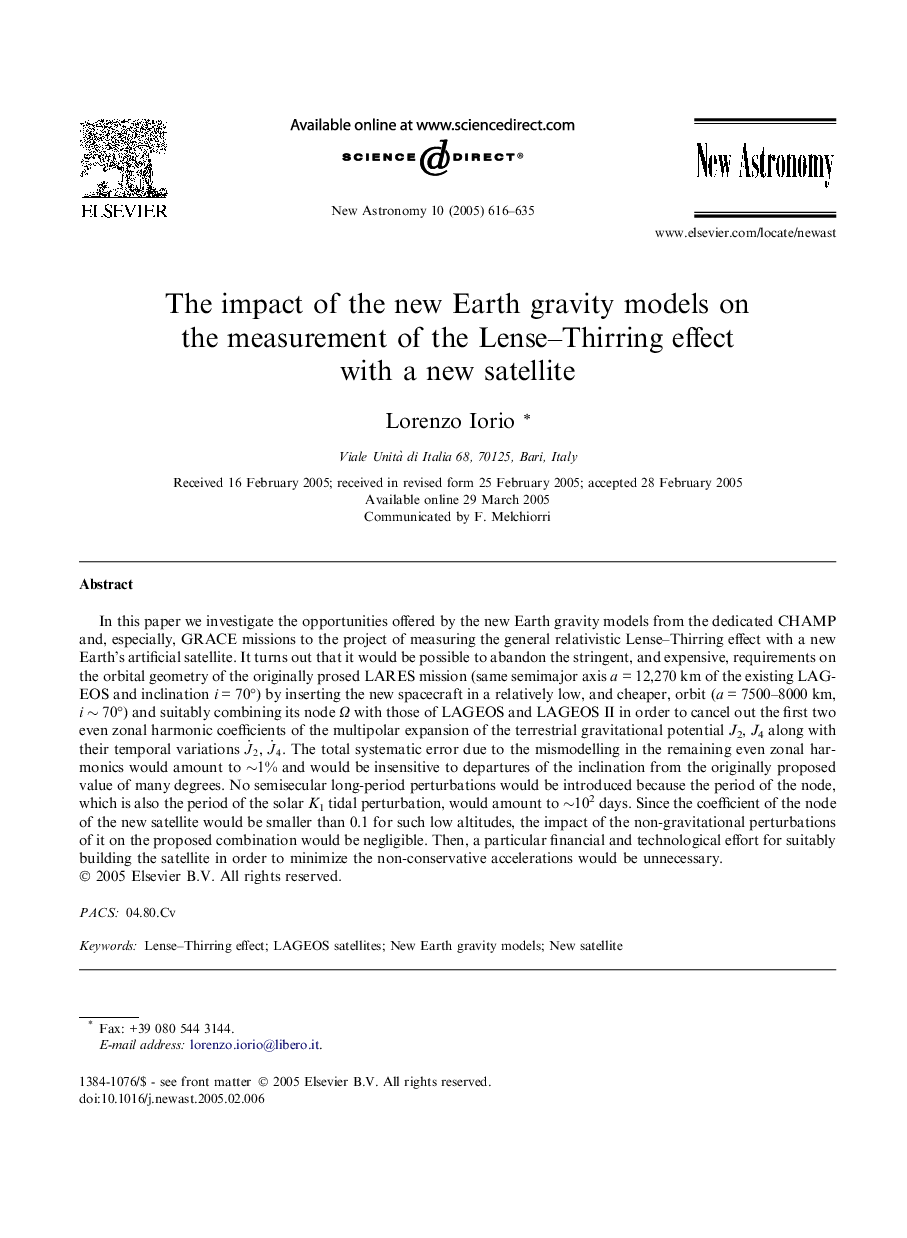| کد مقاله | کد نشریه | سال انتشار | مقاله انگلیسی | نسخه تمام متن |
|---|---|---|---|---|
| 9827954 | 1523760 | 2005 | 20 صفحه PDF | دانلود رایگان |
عنوان انگلیسی مقاله ISI
The impact of the new Earth gravity models on the measurement of the Lense-Thirring effect with a new satellite
دانلود مقاله + سفارش ترجمه
دانلود مقاله ISI انگلیسی
رایگان برای ایرانیان
کلمات کلیدی
موضوعات مرتبط
مهندسی و علوم پایه
فیزیک و نجوم
نجوم و فیزیک نجومی
پیش نمایش صفحه اول مقاله

چکیده انگلیسی
In this paper we investigate the opportunities offered by the new Earth gravity models from the dedicated CHAMP and, especially, GRACE missions to the project of measuring the general relativistic Lense-Thirring effect with a new Earth's artificial satellite. It turns out that it would be possible to abandon the stringent, and expensive, requirements on the orbital geometry of the originally prosed LARES mission (same semimajor axis a = 12,270 km of the existing LAGEOS and inclination i = 70°) by inserting the new spacecraft in a relatively low, and cheaper, orbit (a = 7500-8000 km, i â¼Â 70°) and suitably combining its node Ω with those of LAGEOS and LAGEOS II in order to cancel out the first two even zonal harmonic coefficients of the multipolar expansion of the terrestrial gravitational potential J2, J4 along with their temporal variations JË2, JË4. The total systematic error due to the mismodelling in the remaining even zonal harmonics would amount to â¼1% and would be insensitive to departures of the inclination from the originally proposed value of many degrees. No semisecular long-period perturbations would be introduced because the period of the node, which is also the period of the solar K1 tidal perturbation, would amount to â¼102 days. Since the coefficient of the node of the new satellite would be smaller than 0.1 for such low altitudes, the impact of the non-gravitational perturbations of it on the proposed combination would be negligible. Then, a particular financial and technological effort for suitably building the satellite in order to minimize the non-conservative accelerations would be unnecessary.
ناشر
Database: Elsevier - ScienceDirect (ساینس دایرکت)
Journal: New Astronomy - Volume 10, Issue 8, August 2005, Pages 616-635
Journal: New Astronomy - Volume 10, Issue 8, August 2005, Pages 616-635
نویسندگان
Lorenzo Iorio,